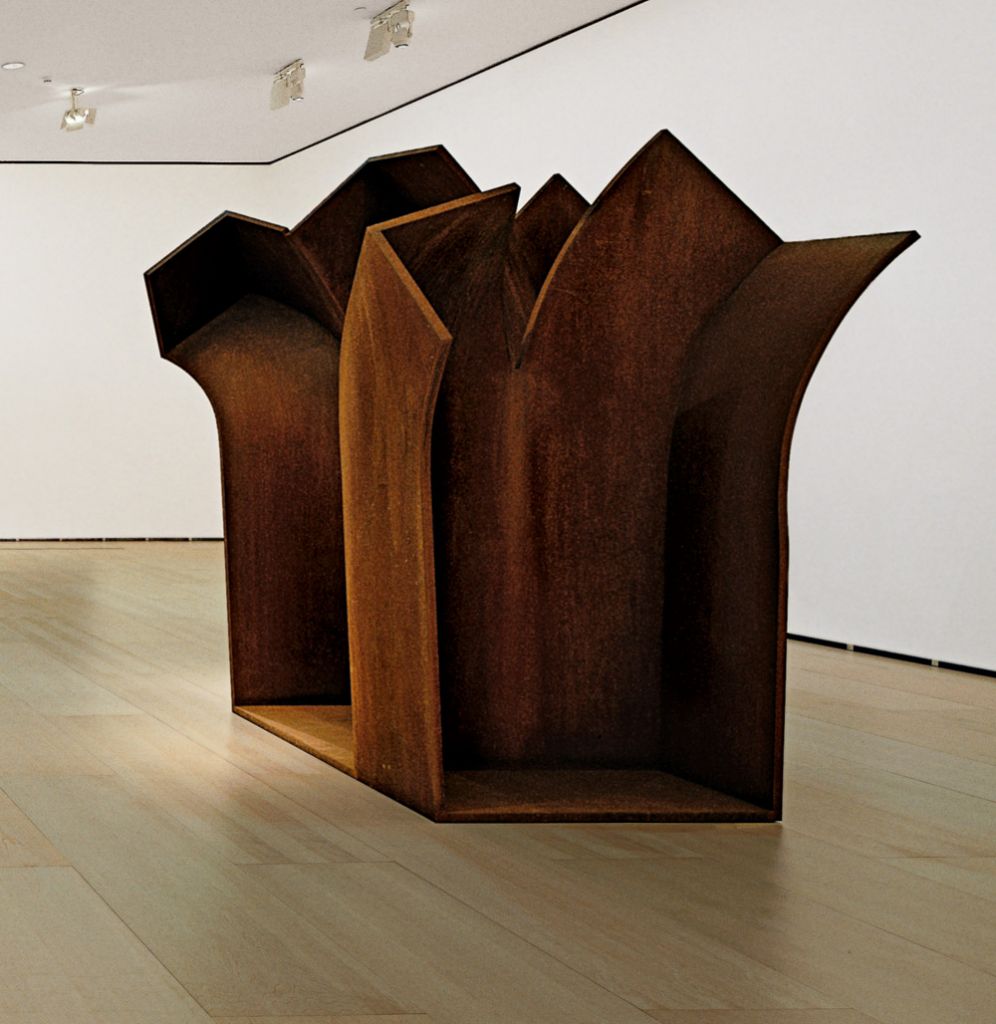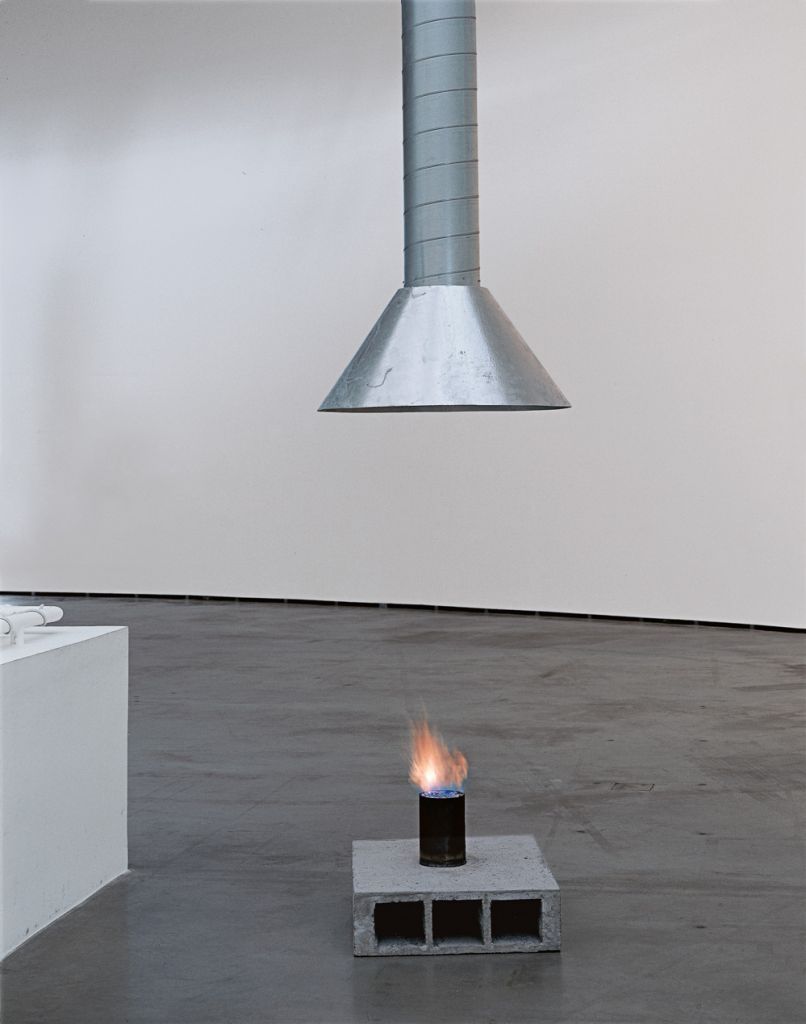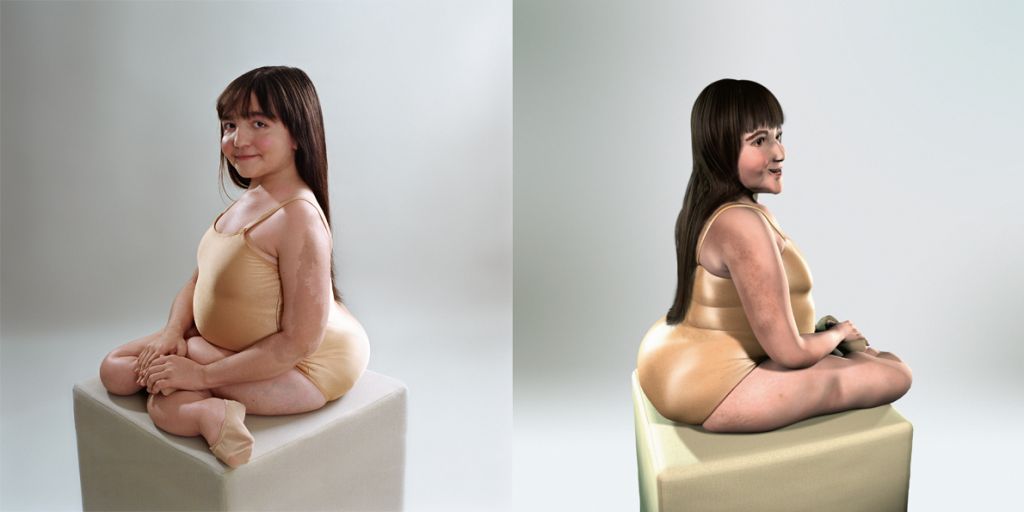Space for the Spirit
1995Pink granite173 x 85 x 91 cm
Eduardo Chillida studied architecture in Madrid from 1943 to 1947, before deciding to turn to painting and ultimately—after moving to Paris in 1948—to sculpture. His early architectural training is apparent in the underlying structure, attention to materials, and careful planning of spatial relationships that characterize his sculptures. Indeed, Chillida conceived of sculpture in relation to architecture: "To construct is to build in space. This is sculpture, and generally speaking sculpture and architecture," he declared.[1] Over the course of five decades, he established himself as one of the most important Basque artists of the 20th century and an internationally recognized figure in postwar sculpture, leaving behind a rich legacy in monumental, site-specific public sculptures as well as more conventionally sized works.
The materials Chillida turned to consistently informed his investigations of conceptual questions and metaphysical concerns. His early sculptures in Paris were executed in stone and plaster—materials suited to his study of archaic works in the Louvre—and were drawn from the human figure as well as natural forms. Upon his return to the Basque Country in 1951, he began to focus more on the metamorphosis of space and the abstract definition of spatial volume through form, and turned to iron and then wood and steel-materials that represented Basque traditions in industry, architecture, and agriculture, and also recalled the region's distinctive landscape and what Chillida described as its "dark light."
Space for the Spirit (Espacio para el espíritu, 1995) is carved from a single piece of pink granite, obtained using traditional stone-harvesting methods from an Indian quarry. Chillida began to work with this granite in the late 1980s, creating works such as How Profound Is the Air IV (Lo profundo es el aire IV, 1987), shown at the 1988 Venice Biennale. These granite pieces have an opening through their uppermost section, a square that allows light to flood the interior. Chillida knew that stone, with its impenetrable nature, would always resist being transformed; rather than a geometry inscribed in stone, therefore, he sought out the intrinsic geometry of the material itself. For Chillida, the force and power of stone resided in its capacity to modulate and congregate space. In working with granite, he hoped that the rock itself, like a mountain, would offer an experience of architecture.
1. Eduardo Chillida, conversation with Mario Terès, in Christa Lichtenstein, Chillida und die Musik. Baumeister von Zeit und Klang (Cologne: Wienand, 1997), p. 73; cited in Chillida, 1948–1998, exh. cat. (Madrid: Museo Nacional Centro de Arte Reina Sofía, 1998), p. 62.
Source(s): Kosme de Barañano. "Eduardo Chillida." In Guggenheim Museum Bilbao Collection. Bilbao: Guggenheim Museum Bilbao; Madrid: TF Editores, 2009.
Original title
Space for the Spirit
Date
1995
Medium/Materials
Pink granite
Dimensions
173 x 85 x 91 cm
Credit line
Guggenheim Bilbao Museoa






